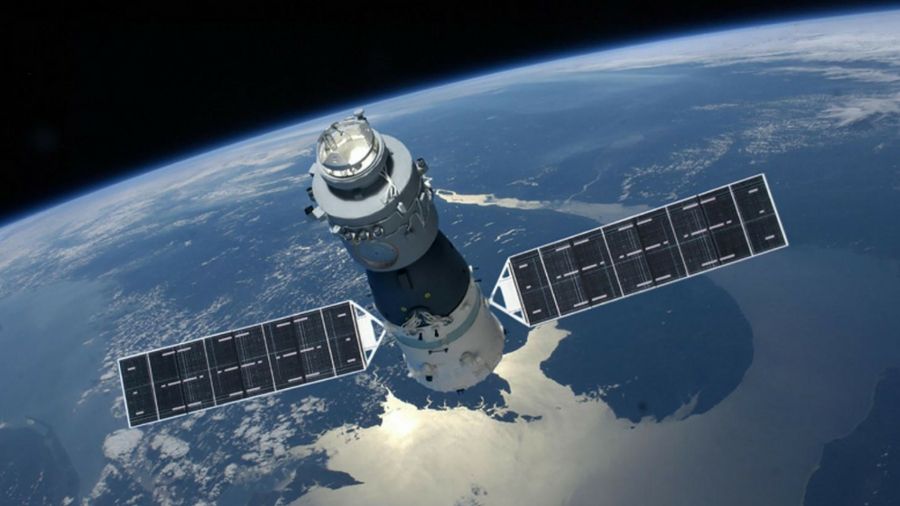“We view direct-to-cell as a really disruptive thing,” said Col. Eric Felt, director of space architecture at the office of the assistant secretary of the Air Force for space acquisition and integration.
Starshield is a militarized version of SpaceX’s Starlink internet satellites, with enhanced encryption and other security features. And unlike Starlink, which is a commercial service, the Starshield satellites would be owned and controlled by the U.S. government.
New direct-to-cell satellite tech could disrupt billion-dollar military satcom programs
Col. Eric Felt: Direct-to-cell services conceivably could enhance or replace dedicated narrowband satcom systems like the Mobile User Objective System (MUOS)
Sandra Erwin June 10, 2024
ARLINGTON, Va. — The U.S. Space Force is closely watching the development of commercial satellite communications services that allow standard smartphones to connect directly to satellites, seeing the technology as potentially disruptive to existing military narrowband satcom systems like MUOS, officials said June 10.
Speaking at SAE Media Group’s Milsatcom USA conference, Felt said his office is tracking developments in commercial satellite communications such as direct-to-cell services.
- These services could potentially enhance or replace dedicated military narrowband satcom systems like the Mobile User Objective System (MUOS), which provides secure voice and data to mobile forces.
“How that technology develops is going to play out in how we provide service to the narrowband users,” said Felt.
- Felt said these new technologies could give U.S. forces an alternative path to satcom resilience. The Space Force plans to buy two new narrowband communications satellites from either Lockheed Martin or Boeing to modernize the existing constellation of five MUOS satellites in geosynchronous orbit.
The program, called MUOS Service Life Extension, would allow MUOS to provide services well into the 2030s, Felt noted. But the military is looking to experiment with commercial direct-to-cell services as it weighs options for what comes after MUOS.
A Space Force organization known as the Space Warfighting Analysis Center is about to complete a study of the future narrowband architecture, said Felt.
“They are looking at all kinds of options. The really disruptive thing here is direct to cell, 5G from space.”
The MUOS service life extension program, said Felt, “bridges us into the 2030s when we can start migrating away from the current MUOS terminals to something different.”
Direct-to-cell satcom enables basic connectivity like messaging on regular smartphones in areas without cell coverage, by having the phone signal route through a satellite in orbit and then to terrestrial networks.
The MUOS service life extension program, said Felt, “bridges us into the 2030s when we can start migrating away from the current MUOS terminals to something different.”
Direct-to-cell satcom enables basic connectivity like messaging on regular smartphones in areas without cell coverage, by having the phone signal route through a satellite in orbit and then to terrestrial networks.
Companies like Starlink, Iridium, Lynk Global, AST SpaceMobile and others are racing to bring these services to market.
Felt pointed out that cybersecurity would need to be closely evaluated with any commercial service. But the technology’s potential upside — instantly connecting troops on any device to resilient satellite communications without special equipment — has the Pentagon eager to test it
Iridium’s contract
Clare Hopper, head of the Space Force’s Commercial Satellite Communications Office (CSCO), said some direct-to-cell satcom providers have been selected to compete for task orders under the Proliferated Low Earth Orbit satellite services contract.
- “I think it’s fantastic,” Hopper said at the Milsatcom USA conference.
- “It’s a good fit for it,” she added.
- “That’s usually the most optimal way to go about getting services on contract.”
Hopper said future developments in direct-to-cell technology would reshape the Pentagon’s next contract with Iridium.
- The company in 2019 won the Enhanced Mobile Satellite Services (EMSS) contract that provides DoD users worldwide access to Iridium’s satellite network, offering unlimited voice calls and narrowband data transmissions.
Hopper noted that Iridium’s contract will be up for renewal in 2026. “Historically, we’ve had a very long and successful partnership with Iridium,” she said.
“And we are already planning what the next generation of that program looks like, not just the partnership with Iridium, which we expect to continue, but also what other capabilities might grow into EMSS.”
“We’re really excited about the trajectory of that program and where it might go,” Hopper said. “We’re looking into how to evolve EMSS in general … and the service plans we offer could change as well.”
“We’re really excited about the trajectory of that program and where it might go,” Hopper said. “We’re looking into how to evolve EMSS in general … and the service plans we offer could change as well.”











No comments:
Post a Comment